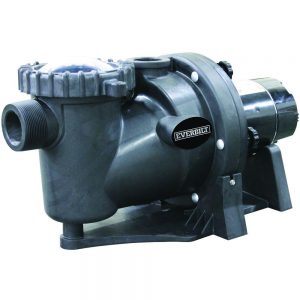Pool Pump Guide
Save Energy By Using A Energy Efficient Pool Pump

As anyone who owns a swimming pool knows, running a pool pump is the most important part of pool maintenance. Without a pool pump, a pool will quickly become a breeding ground for harmful bacteria and viruses, which can be spread between users. Although it may remain initially clear, the pool will also eventually become victim to algae, starting off as a greenish tint to the color of the pool and developing to the green, murky substance commonly found in ponds, and certainly not pleasant to swim in or look at.
The main problem with pool pumps isn’t installing them, but keeping them running. Energy efficient pool pumps can save you hundreds of dollars every year in maintaining your pool, but there are a few methods and specifications to consider when looking for one. Because of their constant demand for energy, efficient pool pumps usually regulate the amount of time they are used throughout the day. Most people run their pumps between 6 and 12 hours during the summer, long enough to sanitize the pool while saving the need to run for the entire day. This is usually reduced to only 3 or 4 hours during the winter months when the pool isn’t being used.
How much the average pump will cost a consumer is based on pool size, pump horsepower, hours of operation, and the cost of your utility bills. Because of this, it’s hard to estimate an exact price for the average swimming pool user. A standard “Energy Efficient Pool Pump” purchased in the U.S and running at single speed will cost between $1000 and $1500 a year running at 2hp.
Single speed pumps are the most commonly used in the United States, and most are even labeled as energy efficient pool pumps; but what are your other options? First, even a basic multi-speed or dual-speed pump can save you hundreds of dollars. When shopping for pumps, it’s worth checking which have different speed settings, and which are simply labeled as “energy efficient” pool pumps without offering different speeds. Running your pump at different speeds based on usage and time of the year can keep your pool just as clean for a fraction of the cost. Pumps can offer either variable speed settings or pre-set speeds.
Using an energy efficient pool pump is not all about speed settings, however. Using a medium-head, high flow pump can help keep any energy costs down at any speed, and intelligently controlling your settings based on pool use can save you hundreds of dollars over the course of the year. Careful maintenance combined with variable speed settings can not only provide energy savings, but lead to a longer lifetime for your pump, saving even more money in the long run.
An energy efficient pool pump is a crucial consideration when running a pool. Although energy efficient pumps might cost slightly more than their less efficient counterparts, it will only take a few minutes to calculate the massive amount of savings you can be enjoying in a year or ten years from now if you choose an energy efficient pump.
